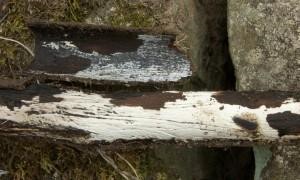Keeping your garden trees healthy and cared for can sometimes feel like a tricky task. Winter can cause damage to our trees, so it’s important to make sure they are strong enough to withstand whatever wintery storms come our way. You can also finat trees become damaged as a result of gardening activities such as lawn trimming and the use of strimmers. Getting too close to trees with these pieces of equipment can cause cuts and damage to the tree bark. It can also break your equipment leading to the need for Mountfield Parts like the ones you can find at https://www.diyspareparts.com/parts/mountfield/
Here are some common tree issues that aren’t caused by other gardening activites to look out for in your garden:
- Yellow False Acacia
This tree has been suffering recently with the following symptoms: not properly coming into leaf, early leaf fall and brown spotting on the leaves. These issues are caused by several factors including bacterial rot, honey fungus, leaf spot fungus and phytophtora. Unfortunately, there is little that can be done. In some places, the trees come good of their own accord but in other areas, the tree is unsalvageable. If the tree has limbs that are at risk of causing harm or damage if they fall.
- Honey Fungus
This is a problem that occurs every year and will result in the need to remove both the tree and the stump. The fungus enters the tree through an open wound and has a more detrimental effect on trees that are already damaged or very susceptible. To check a tree for honey fungus, peel back some of the bark to look for the presence of a mushroomy-smelling cream-coloured residue.

- Powdery Mildew
This is a problem that occurs mainly in summer and can affect maples and oaks. The predominant cause is poor circulation of air and dry conditions. Try to avoid nitrogen-heavy food and ensure your tree is well hydrated after mulching. A tree will normally get over the problem on its own, so you shouldn’t need to use a fungicide.
- Bleeding Canker
Horse chestnuts can often suffer from yellowed leaves caused by moths or leaf spots but the real problem that sometimes occurs as well is a bleeding canker. A canker can occur as a result of a wound to the bark and you’ll notice it by the presence of an unpleasant black ooze. Some trees are able to overcome the problem on their own but if in doubt, seek the advice of a tree surgeon.
- Squirrels
If you have trees between 20-40 feet tall, you’ll most likely have experienced troublesome squirrels. They gnaw on branches and strip the bark, leading to significant damage and leaving the trees in a vulnerable state. Anti-squirrel collars and traps are possible solutions.

- Aphid Attack
If you have coniferous hedges or leylandii and have noticed browning and die-back, then chances are you have an aphid attack. Avoid cutting your hedge in the autumn, as cut-back hedges have been known to suffer more. It is thought that the problem could be from the use of weed killing treatments being used on nearby pavements and causing issues for the hedge roots.

